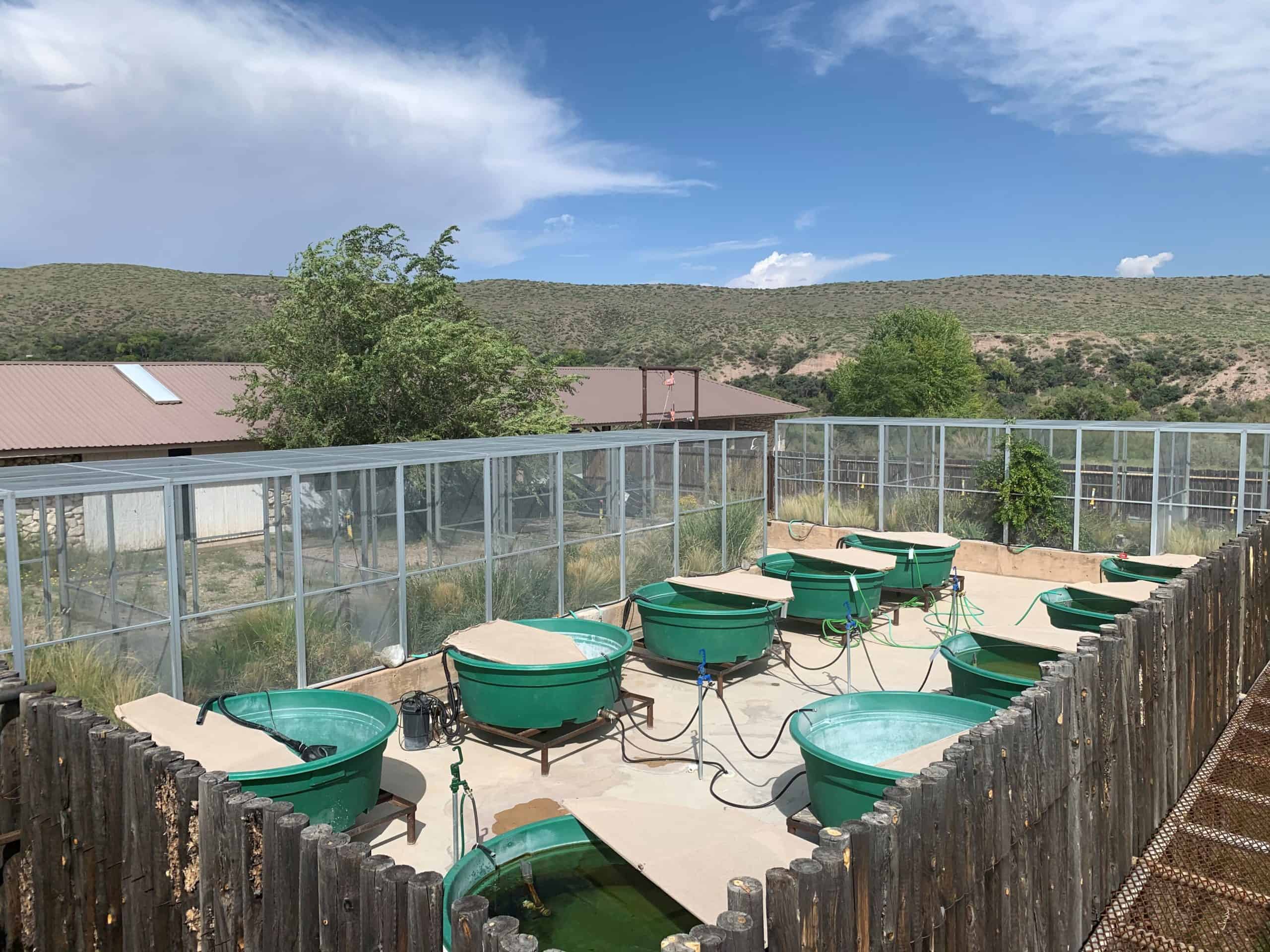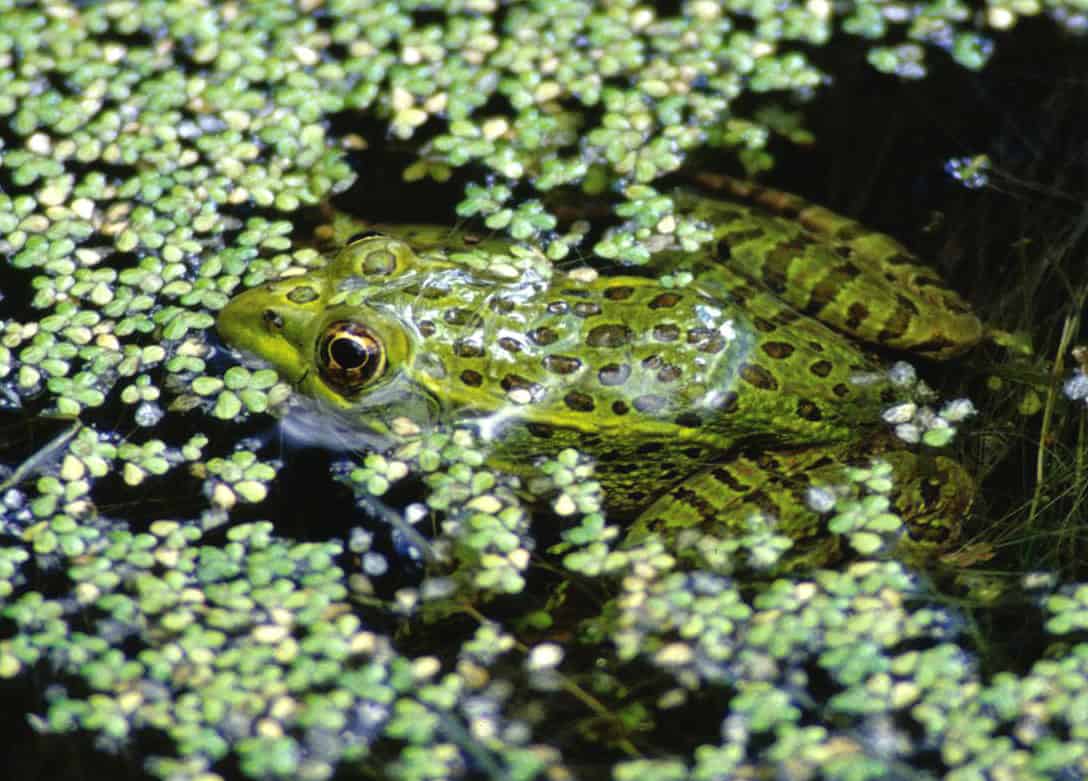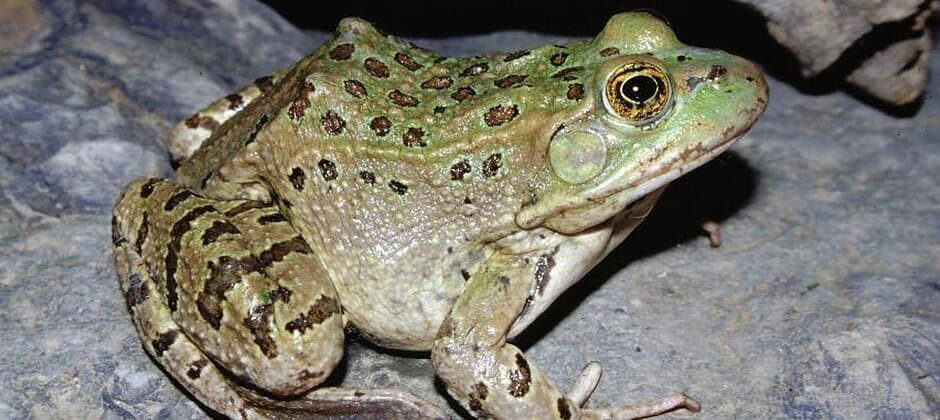Share this article
Specific reintroduction factors lead to Chiricahua leopard frog success
By the 1980s, more than 80% of populations of Chiricahua leopard frogs in Arizona and New Mexico had disappeared. The amphibians faced habitat loss, predation by invasive fish like bass and sunfish, and competition from invasive American bullfrogs. The chytrid fungus Batrachochytrium dendrobatidis also likely played a role in dropping numbers of Chiricahua leopard frogs.
These factors led the U.S. Fish and Wildlife Service to list the frog as federally threatened in 2002.
But even before listing, wildlife managers with the Arizona Game and Fish Department, the U.S. Fish and Wildlife Service and Ladder Ranch—a private Ted Turner reserve—began reintroducing Chiricahua leopard frogs (Rana chiricahuensis) into wetlands in Arizona and New Mexico, both to bolster existing populations and to restore extirpated populations. Dozens of of different translocations involved egg masses, head-started tadpoles and adult frogs—sometimes various waves of translocations to the same place. But nobody had analyzed which strategies worked best and when.
“There are a lot of reintroduction and translocation program out there, but there are very few efforts to compile more than a decade of data where [wildlife managers] can track success and failure,” said Blake Hossack, a research zoologist with the U.S. Geological Survey.
Hossack led a study published recently in Global Ecology and Conservation in which he and his colleagues compiled information from frog surveys at 641 sites across New Mexico and Arizona. Of these, 115 sites had received translocated frogs, eggs or tadpoles, while the rest had not.

Some frogs were head-started in outdoor rearing pens before reintroduction into the wild. Credit: Cassidi Cobos
The research showed that many of these reintroductions proved successful. The best prediction of whether the reintroduced frogs would persist for more than four years was if a site had received two or more instances of translocations, Hossack said.
The team also found that the best technique to increase predicted persistence of reintroduced frog populations was stocking sites with tadpoles, most of which were hatched in captive breeding facilities. Sites where managers had done this had more persistent frog presence than those that just received translocated egg masses or adult frogs.

Chiricahua leopard frogs do well in some populations where invasive bullfrogs and fish have been removed. Credit: Jim Rorabaugh
Where the reintroduced frogs, eggs or tadpoles originated didn’t make a difference, though. Hossack said that the estimates didn’t show much different between frogs moved from indoor facilities, from outdoor rearing pens or those just bumped from one wild area immediately to another.
“That’s encouraging,” he said. “It provides flexibility for where you find your animals.”
What did matter was where the frogs were reintroduced. Frogs moved to ponds were more likely to persist than in streams, their analysis showed. Population persistence was highest in ponds specifically restored with frogs in mind.
The best way to ensure continued occupancy involves a heavy dose of management, they found. One of the most successful reintroduction sites is the Buenos Aires National Wildlife Refuge in Arizona. Before frogs were even reintroduced to the refuge, wildlife managers began work removing invasive American bullfrogs (Lithobates catesbeianus) in the early 2000s. Once the refuge was deemed clear, wildlife managers reintroduced Chiricahua leopard frogs to sites there. But that wasn’t the end of management—bullfrog removal continues in areas elsewhere on the landscape to this day.
“That’s the path forward,” Hossack said. “It’s not easy, but nothing is.”
Header Image: Chiricahua leopard frogs are considered threatened under the U.S. Endangered Species Act. Credit: Jim Rorabaugh








